Typhoon jets have hit Islamic State targets in northern Iraq.
The Royal Air Force continues to fly daily armed reconnaissance missions over Iraq and eastern Syria as part of the global coalition against the Islamic State terrorist movement, say the MoD.
On Friday the 10th of April, a patrol conducted air strikes in support of a counter-terrorism operation in northern Iraq.
“The pair of Typhoons, assisted by an RAF Reaper aircraft, identified Daesh terrorists occupying a group of fortified buildings in an isolated location west of Tuz Khurma, known to be inhabited by active terrorist commanders and fighters. The aircraft conducted a thorough check of the area for non-combatants, before using a combination of precision guided bombs to destroy the buildings.
The surveillance aircraft continued to scan the area, confirming that all weapons had struck their targets and there was no collateral damage. Subsequent intelligence indicated that it was a successful operation, removing several Daesh fighters from the battlefield and further degrading the terrorist movement.”
Defence Secretary Ben Wallace said:
“Britain’s adversaries have not let Covid-19 stop them posing a risk to our citizens and allies. It is for that reason that Defence continues to take whatever steps are necessary – at home and abroad – to keep the nation safe. The use of RAF jets and a Reaper aircraft to deliver a successful strike against Daesh terrorists and their hide out demonstrates that the UK’s Defence never sleeps and will always do what is necessary to protect our people.”



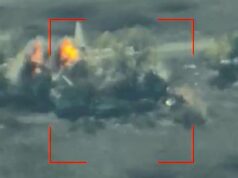
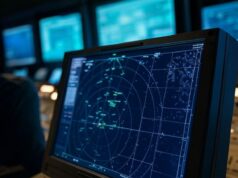
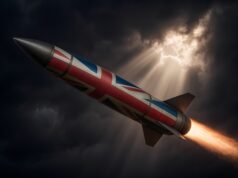
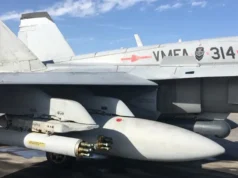

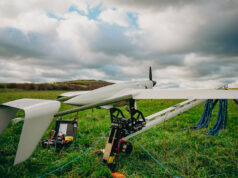
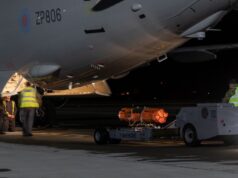
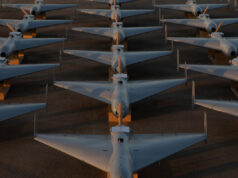
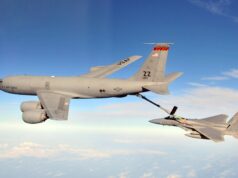
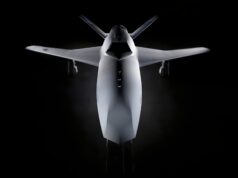

Bit harsh, those isis fighters were probably just nipping out for a bit of shopping or daily exercise from the coved 19 lockdown, typical of over bearing authorities and their overkill( pardon the pun), ah well at lease we saved some coved 19 test kits, well done RAF.
Easy to forget the overseas commitments we still have, and the daily flight operations over Syria and Iraq. Could do with a 4 month deployment to Akrotiri ???
I thought they had been withdrawn. How wrong I was.
Think we have 8 or 10 Typhoons based at Akrotiri, Voyagers, Reapers, Chinooks, a E3 sentry and RC135 & sentinel R1. Falklands det, chinooks in Africa too, QRA North & South. And thats just the standard ops stuff.
and just the RAF!!
Welcome back to the party!
Any further news on UK AESA radars that will be installed on Typhoon?
Saab starts flight testing AESA fighter radar
https://www.janes.com/article/95782/saab-starts-flight-testing-aesa-fighter-radar
With the current situation in aviation , could the RAF pick up some nice low mileage ,one lady owner 737’s to boost our numbers
Hi Nigel. Not sure when RAF Typhoons get the new radar, though I understand the one we will be buying will have the electronic attack capabilities, or the CAPTOR E R2 i think its called. Probably down to money, and also that the current Captor radar is still probably as good, if not better then anything currently in service. So i think the RAF aren’t in any particular rush for it.
Thank you!
Seeing as Japan has decided against Tempest and Italy’s involvement, whilst they seem keen, being uncertain, I wonder, if Tempest looks unlikely to go ahead, whether we could start trying to evolve Typhoon more.
Boeing developed the F-15SE Silent Eagle, a version of the F15E developed for a much lower RCS, made with radar-absorbing materials and able to carry weapons internally. I wonder if the same could be done for Typhoon, should Tempest end up looking likely to be cancelled.
Would be better and cheaper to produce them as all-new airframes than try to modify existing ones, but would keep Typhoon in the game for years further until a Gen 6 replacement can be done, and would keep us building planes for decades to come.
There’s still a lot of potential in the Typhoon’s current airframe. However, if there was the will and money the aircraft could be significantly enhanced.
Phase 1 – Easy Stuff
1. The Captor-E will significantly enhance the mission capability of the aircraft and with the radar 2+ build brings it almost on par with the F35’s APG81.
2. Enhanced Praetorian. Leonardo as the prime developer will develop a new defensive aid system for the aircraft. It also has the ability for being scaled up for offensive jamming.
3. EJ200, the engine has an untapped growth margin of 20%, if used it can either make the engine more powerful or tuned to be more fuel efficient.
4. Thrust Vectoring Nozzle (TVN). By itself the TVN will offer a slightly better higher alpha capability and enhanced short field performance. However, if combined with a higher performance EJ200 it will give the aircraft even greater performance in sustained turns. It could also be incorporated as part of the flight controls. This would reduce the deflection required by the canards or ailerons so would also benefit the aircraft’s RCS.
5. Leading Edge Root Extension (LERX). In aerodynamic simulations and physical trials the LERX has shown they enhance the short field performance, the roll rate and also reduce drag.
Phase 2 – Doable
It has long been acknowledged that the RCS of the aircraft is significantly better than Tornado, but nowhere near a F35. There is not a lot you can do without changing the wings, fin and fuselage. However, much like the Su57 and J20, you can reduce the frontal aspect RCS.
6. Replace the canards with a composite constructed one, replace the metal leading edge with a composite Radar absorbent material (RAM) alternative.
7. Replace the leading edge flaps with a composite constructed one including RAM.
8. Replace the air intake splitter with a composite constructed one incorporating RAM.
9. Replace the metal leading edge of the fin with a composite constructed one incorporating RAMl.
10. Weapons containers. By placing a container built from a radar absorbent material under the pylon that contains say two ASRAAMs. You have removed the 90 degree radar reflectors of the ASRAAM’s tail fins. This is good for the aircraft’s RCS management. The containers could be scaled up for Meteor, Spear etc. The would also be aerodynamically shaped to reduce the inherent drag from pylon mounted weapons. In emergencies you can also drop them.
By replacing the leading edges with a RAM infused version and the area around the air intake splitter, will significantly reduce the frontal RCS. Other areas would be the 27mm gun vents, adding a gold wash to the Pirate’s IRST protective lens and gold washing the canopy. Unfortunately the RCS will most likely still be higher than that achieved by the Su57 and J20. It will however, decrease the range at which it can be detected by ether of these aircraft, which is perhaps more important. Especially when you factor in the range advantages of ASRAAM and Meteor.
Phase 3 – Show me the money.
This would need a significant redesign of the fuselage, wings and fin arrangement. In essence it would be a new type of aircraft, with perhaps only parts of the fuselage remaining original.
11. A cranked delta wing. The wing currently used is a simple delta. These are ok, but a cranked delta would be more efficient, especially at high speeds and for aerobatics. If this was combined with LERX, the vortices generated along the wing join would help to reduce wave drag, especially at supersonic speeds. The vortices would also help generate more lift at high alpha and when banked over would ensure the stabiliser was still effective.
12. Blown air flight controls. Blown air flight controls are not a new invention as it’s a development of blown flaps, as used on the Buccaneer for example. It can remove the need for having moving flight controls though. This has one major benefit which is that it will reduce an aircraft’s RCS by quite a lot. The small gaps necessary for the flight controls are to make sure that when the aircraft heats up through air friction, the controls don’t jam. These gaps can create a resonant cavity to certain frequencies of radar and can re-amplify the signal back to the source or act as 90 degree reflectors. Blown controls don’t have the same response time as a mechanical control, so this would be backed up with thrust vectoring.
13. Twin stabilisers. Having twin canted fins helps reduce an aircraft’s RCS, but more importantly has better stability at supersonic speeds. At high alpha with the combination of LERX generated vortices, the stabilisers being in the stream remain effective and not blanked off by the airframe. The stabilisers also provide extra lift when banked over, so limits the amount of slippage. If the aircraft uses thrust vectoring, the stabilisers can be significantly reduced in size.
14. EJ230. The engine bays within the airframe have scope for a larger diameter engine. This was designed in during the initial build in case the EJ200 turned out to be a failure. The development of the EJ230 is an evolution of the current EJ200, except it uses a larger diameter core and will be a variable cycle engine. By controlling the by-pass air you can turn the engine from turbofan to turbojet, which means it can operate at higher altitudes. It also means you can better control the power and efficiency of the engine by introducing the by-pass air into various stages within the engine, such as the intermediate pressure stage, the hot high pressure stage etc.
15. Reaction Engines Pre-Cooler. It would be highly beneficial for the development of Tempest, let alone the performance increase the pre-cooler would have on the Typhoon, for the pre-cooler to be fitted to the aircraft. The best simile I could liken the system to, is like adding nitrous oxide to an internal combustion engine. It gives the engine a significant but short term performance boost. But with the pre-cooler, it would last for as long as the cooling medium is available. It cannot be understated how much of a boost this will give a conventional jet engine. If this is combined with a variable cycle or even better a multi-mode engine (turbofan/turbojet/ramjet), the sky is literally the limit. The performance advantage that this combination will provide will be similar to when the first jets appeared against the then top piston engine fighters.
16. Replacing the fuselage’s metal alloy skin with a composite infused with RAM will help reduce the aircraft’s RCS.
It is feasible that most of Phase 1 and some of Phase 2 will be used at some point in the aircraft’s life. But it’s unlikely that any of the Phase 3 options will be taken up, as you are basically creating a new aircraft, much like a Tempest lite! It would however be very beneficial if a couple of Typhoons could be modified as per Phase 3, to be used as test bed aircraft for Tempest. The current airframe and wing design of Typhoon limits its maximum attainable airspeed to about Mach 2.5. To go any faster you could make the nose significantly longer, but that would mess up the pitch and roll response, which the aircraft is famous for. The aircraft for higher speeds would need to be designed as a package of compromises to make sure the end product was not only as responsive as Typhoon, but can also utilise all the advantages superior engine technology brings.
Interesting post thank you.
As always, plenty of available options out there, but little interest or financial investment from partner nations to incorporate some of these modifications onto our Typhoon fleet.
LERX and thrust vectoring has been available for some time now, and improvements to the airframes RCS is easily achievable too from what you have said.
It is a shame, but without the partner Nations agreement very little will be done. As seen on the Kuwaiti Typhoons very little has been done over a standard Tranche 3, The main upgrade it has is the Captor-E radar, it has all the same weapons integration software as Project Centurion. I do see both the Italian and RAF Typhoons getting the 2+ version of the radar along with the DAS upgrade. Will we also get the LERX? It’s already been trialed and showed its benefits. It is a minor mode, but needs the flight control software updating to take advantage of the improvement. Clearly more can be done, I know the RAF would like to add to the aircraft’s performance, but after this pandemic will there be any money available? At least the new radar has already been budgeted in to the Typhoon’s life an the DAS will be upgrade, so at least that’s something positive to look forward to..
“It is a shame, but without the partner Nations agreement very little will be done.”
Agreed, which is why we would be far better off selling on the Tranche 1-2 aircraft if possible and purchasing the Boeing F/A-18E/F Super Hornet and EA-18G Growler on the back of Germanys order to fill the gap.
https://www.flightglobal.com/boeing-joins-meteor-missile-group/28999.article
No doubt a very good deal could be obtained for these and useful for future carrier operations too. Reducing the overall number of F35B’s and Typhoon sales would pay for this comfortably?
“Price, however, may be a factor: the Super Hornet may cost around $65 million apiece, while the Typhoon comes out to over $100 million. 27 Mar 2020”
Tempest-Loyal Wingman is clearly the way forward for the UK.
Sadly you’re right about the lack of interest or financial investment.
Could be something to consider if both Tempest and the Franco/German FCAS falter, however. The Phase 3 design changes that DaveyB mentions could provide a potential alternative should either or both of the Gen 6 platforms not go ahead for whatever reason.
That said, I know that realistically, should Tempest be a flop that we will most likely just buy 150 F35As.
It is the engine intakes of the F-15E that have got the glaring RCS. Best to design a new aircraft from a clean sheet. Only the tails of the Qatari version of the F-15QE, have been redesigned.
How much does the chin intake of the Typhoon affect RCS? I always thought that that would be one of the big things affecting its radar signature; whole thing is pure right angles.
You are right, the Typhoon’s chin intake has some extra RCS, but less then the F-15.
But have seen the suggestions by DaveyB to reduce the RCS of the Typhoon, it may help.